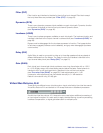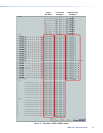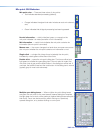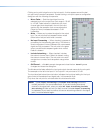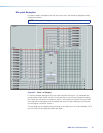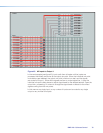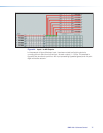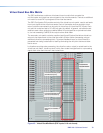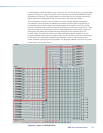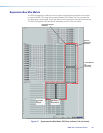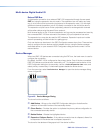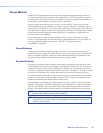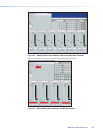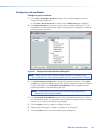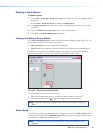
Virtual Send Bus Mix Matrix
The DSP architecture contains a virtual send bus mix matrix that connects the
mic/lineinputs and virtual bus return signals to the virtual bus sends. There is an additional
mix matrix to route EXP input signals to the virtual bus sends.
The DSPConfigurator GUI provides control of the virtual bus mix matrix, used to set levels
from input signals to the virtual bus sends. Each of the twelve mic/line and eight virtual
return inputs are connected to a mix-point for virtual bus A-H (and the EXP inputs). Each
mix-point is muted and set to 0.0dB (unity gain) by default. In general, mix levels are set
relative to each other, achieving a desired blend of input signals at an optimal level close
to, but not exceeding 0dBFS at the output volume level meter.
The secondary mix matrix contains a section (see figure 45 below) that allows virtual bus
returns to be routed back to the virtual bus matrix to allow further processing using an
additional virtual bus processing block. To prevent feedback loops, a virtual channel is
prevented from being routed back to itself by eliminating the mix-point that would allow
that to occur.
In situations requiring extra processing, the virtual bus return output is routed back to the
virtual bus mix matrix, virtual bus send, which then routes the signal back to a processing
signal chain other than the one it was routed from.
Virtual Send Bus Mix-points
(from Mic/Line Inputs)
Virtual Send
Bus Mix Matrix
Virtual Send Bus Mix-points
(from Virtual Bus Returns)
EXP Inputs to Virtual Bus
Sends
Figure 45. Virtual Bus Mix Matrix (EXP inputs 9-16 not shown)
DMP128 • Software Control 78



